“The camera doesn’t matter.” I’ve always clung to the belief that it was the photographer, not the camera, that made good pictures, and one’s skill was far more important than the make or model of his chosen tool. Well, despite that, I just splurged on a new camera, and I’m a bit surprised to find out how much the camera DOES matter.
I’ve loved both my previous DSLRs, and know they are perfectly capable of making high-quality, memorable images. For portrait work, which is the biggest part of my business, they are just fine. But for birds in flight, well, almost anything in flight, I found myself struggling to lock focus. Actually, I struggled to even locate the subject in the viewfinder when using a long lens, like a 600mm or sometimes even 200mm. I could sometimes pull back to a wider angle, focus manually, zoom back in, and refocus, but it took a cooperative and predictable subject, such as a stunt plane.
Enter the Canon 7D Mark II. I chose it because of its sophisticated autofocus system, although I knew that it would be a little more complex to learn. I started reading the online manual before the camera even arrived. However, it didn’t make as much sense until I had the camera in my hands and could test it out on actual subjects.
I used the Tamron 150-600mm lens, as it is the one I find most difficult to focus. Even with relatively still subjects, I have a little trouble getting the focus on the eye because it’s hard for me to hold the heavy lens steady enough. Because the 7DMII focused more quickly, I found I could take the picture before muscle fatigue made me really shaky. However, I was startled by the machine-gun rat-a-tat-tat of the shutter. There is a silent (more silent, anyway) mode, but it comes at the cost of slowing the number of shots you can take per second.
An airplane went overhead, so I tried my luck. I didn’t quite nail the focus perfectly, but I was able to autofocus the camera well enough to locate the plane. This is the uncropped version.
With a bit more practice using the different autofocusing options, I was able to track an erratic dragonfly. Here is a cropped view.
Normally, if I knew I was going to shoot helicopters, I would have chosen a slower shutter speed to show the blur of the propellers, but this was a surprise overhead visitor. If you click on the full size version, you can identify it as a Life Flight copter from UC Health.
But my biggest test was hummingbirds in flight. Unlike my previous hummingbird photography, using flash and shot from a tripod inside a window, I was sitting outside on the deck, handholding the lens. It took some patience, while I consulted my manual and practiced changing my autofocus modes and points. Eventually, the boldest of my regulars showed up. My son calls him “Blotchy Bird,” but I think of him as “Bruiser,” because he runs off the other hummingbirds. I think he’s a juvenile male.
I was thrilled to find that using the wide zone autofocus option, I was able to locate and lock focus on Bruiser before he flew off. Sweet success!
Notice how plain the background is. There is actually a pine tree back there, but it’s so far in the distance that it’s completely blurred out. I moved the feeder a few feet to bring it into more sun, and it also changed the background to a tree about a yard and a half away. This gave a more interesting background without being too busy.
I found that I could start with a smaller area of focus to target the bird and not the flowers or leaves, but enlarge it quickly if I needed to.
When the sun got lower later in the afternoon, we had some lovely directional lighting.
All the bird images are uncropped, with only minor adjustments to brightness and color. Shutter speed was 1/2000 to 1/2500, and aperture f/6.3 to f/8.0, depending on how much light I had. I tried to keep the ISO under 3200 if possible, since the noise started being distracting at 4000, although sometimes I went as high as 16,000! I would like to try a higher shutter speed on a really bright day, although I know that the contrast might kill all the shadow detail.
I’m able to compose much more effectively handholding the lens and not worrying about getting the sweet spot for the flashes. It’s also nice to not worry about startling the birds with the flash, although, I must say, they’re not thrilled about me sitting on the deck waiting for them. But I don’t think they’re too terrified of me, considering that they sometimes hover behind me as I fill their feeders and zip in for a drink before the screen door even clicks behind me. In fact, I think Bruiser is figuring out if he can run me off like he does the other hummingbirds.


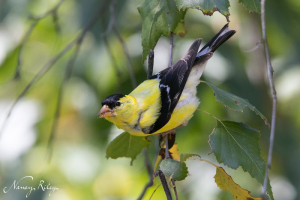
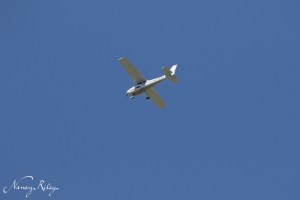

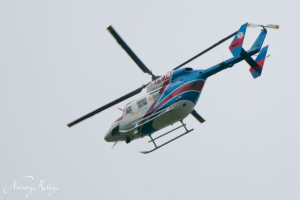
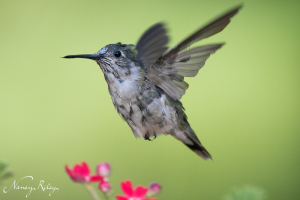
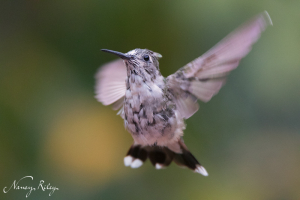
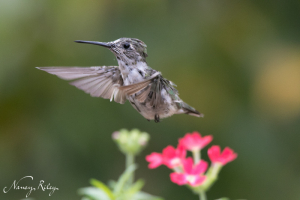
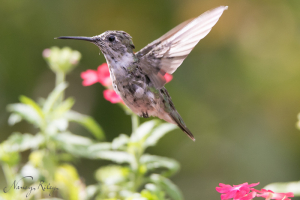
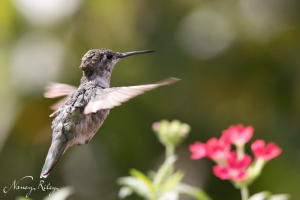








these are beautiful, Nancy! Something tells me you’ll work magic with this new baby b
The Canon 7D Mark II– way to go! Your pictures turned out amazing!! And uncropped! I’m so imoressed. You are so talented, Nancy. I tip my hat to you. And congrats on the new camera!
Thank you! I was amazed at how good the autofocus was, once I learned to use it. It made a huge difference in being able to use the Tamron 150-600 in practical situations.
Great photos! If we ever visit Cincinnati, I’m spending time in your back yard with my 7DII and a big lens too!
Your big lens is bigger than my big lens. 🙂 I’d be jealous, but I don’t think I could lift your big lens. The Tamron is over 4 pounds, and I can barely manage that.